Size: Single Plant with/ without flower | Pot Included 2.5″-4″
The Peace Lily (Spathiphyllum) is a popular and elegant houseplant known for its glossy green leaves and distinctive white, calla lily-like blooms. While generally easy to care for, providing the right conditions will help it thrive.
Here’s a comprehensive guide to Peace Lily, Spathiphyllum Plant care:
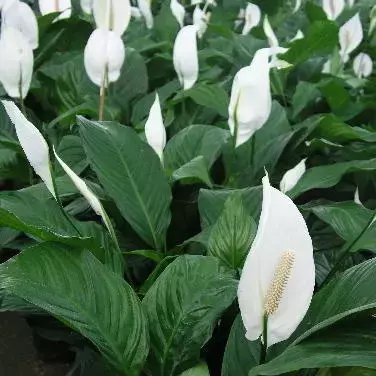
1. Light:
- Bright, indirect light is ideal. This mimics their natural habitat on the jungle floor where they receive dappled sunlight.
- Avoid direct sunlight, which can scorch the leaves and cause brown tips.
- They can tolerate lower light conditions, but this may result in fewer blooms. If you want flowers, ensure sufficient indirect light.
- An east-facing window (for morning light) or a north-facing window is often a good spot.
2. Water:
- Keep the soil consistently moist but not soggy. Peace lilies prefer to be slightly moist.
- Allow the top inch or two of soil to dry out slightly between waterings. You can check this by sticking your finger into the soil.
- Do not let the plant sit in standing water, as this can lead to root rot, which is a common problem. Ensure your pot has drainage holes.
- Use room-temperature water. If possible, use filtered or distilled water, or water that has sat out overnight to allow chlorine to evaporate. Peace lilies can be sensitive to chemicals in tap water, which can cause brown leaf tips.
- Peace lilies are dramatic when thirsty. Their leaves will visibly droop or wilt when they need water. Water thoroughly until water drains from the bottom of the pot. They usually perk up quickly after watering.
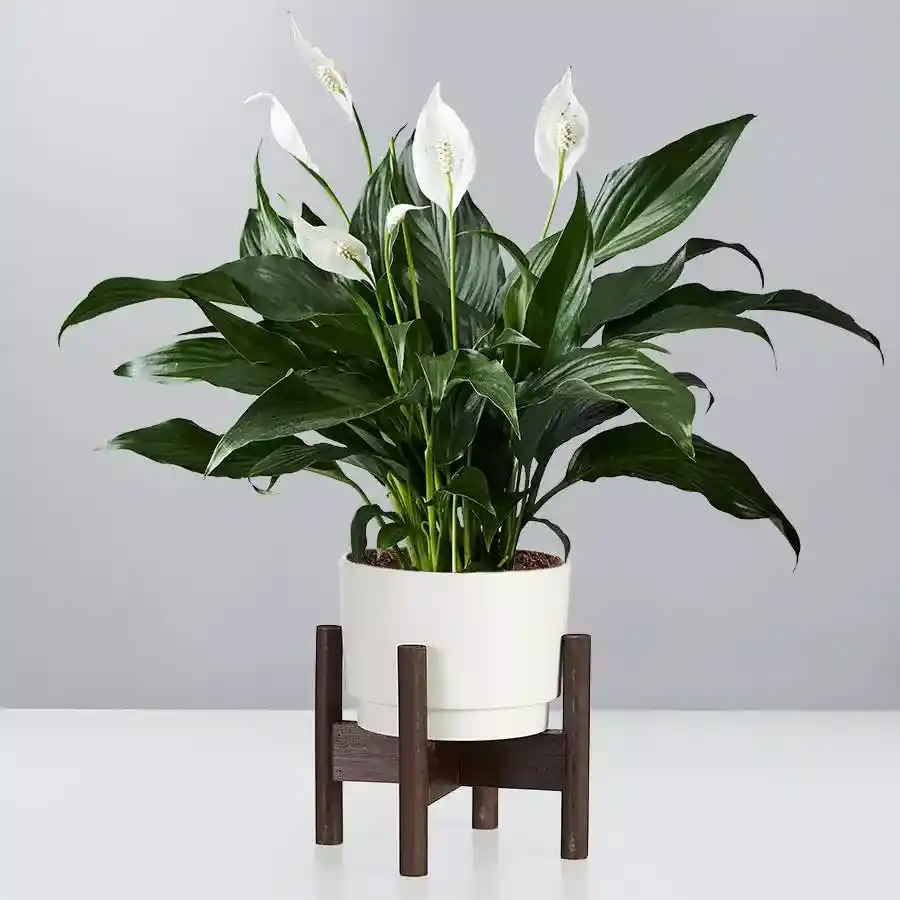
3. Soil:
- Well-draining potting soil rich in organic matter is best.
- A good mix might include equal parts of peat moss, perlite, and vermiculite, or a good quality indoor potting mix.
- They prefer slightly acidic soil with a pH range of 5.5 to 6.5.
- Avoid heavy, clay soils that retain too much water.
4. Temperature:
- Peace lilies are tropical plants and prefer warm temperatures.
- Ideal daytime temperatures are between 65-85°F (18-29°C).
- Avoid temperatures below 60°F (15°C), as cold drafts or prolonged exposure to low temperatures can damage the plant and hinder growth.
5. Humidity:
- Peace lilies thrive in moderate to high humidity (50-60%), mimicking their native jungle environment.
- If your home is dry, especially in winter, you can increase humidity by:
- Misting the leaves regularly with water.
- Placing the pot on a pebble tray filled with water (ensure the pot isn’t sitting directly in the water).
- Using a humidifier nearby.
- Grouping it with other plants.
6. Fertilization:
- Peace lilies are not heavy feeders and don’t require frequent fertilization.
- Fertilize every 6-8 weeks during the growing season (spring and summer).
- Use a balanced liquid houseplant fertilizer, such as a 20-20-20 or 2-2-2 NPK ratio, diluted to one-quarter or one-half strength.
- Avoid over-fertilizing, as this can cause salt buildup, burn roots, and lead to brown leaf tips.
- Withhold fertilizer during the dormant winter months.
7. Repotting:
- Peace lilies like to be slightly pot-bound.
- Repot when the roots start growing through the drainage holes or are circling on top of the soil. This usually happens every 1-2 years.
- Choose a new pot that is only 1-2 inches larger in diameter than the previous one. Too large of a pot can hold excess moisture and lead to root rot.
- Repotting is best done during the growing season (spring/summer) for quicker recovery.
- Gently loosen the root ball before placing it in the new pot with fresh potting mix.
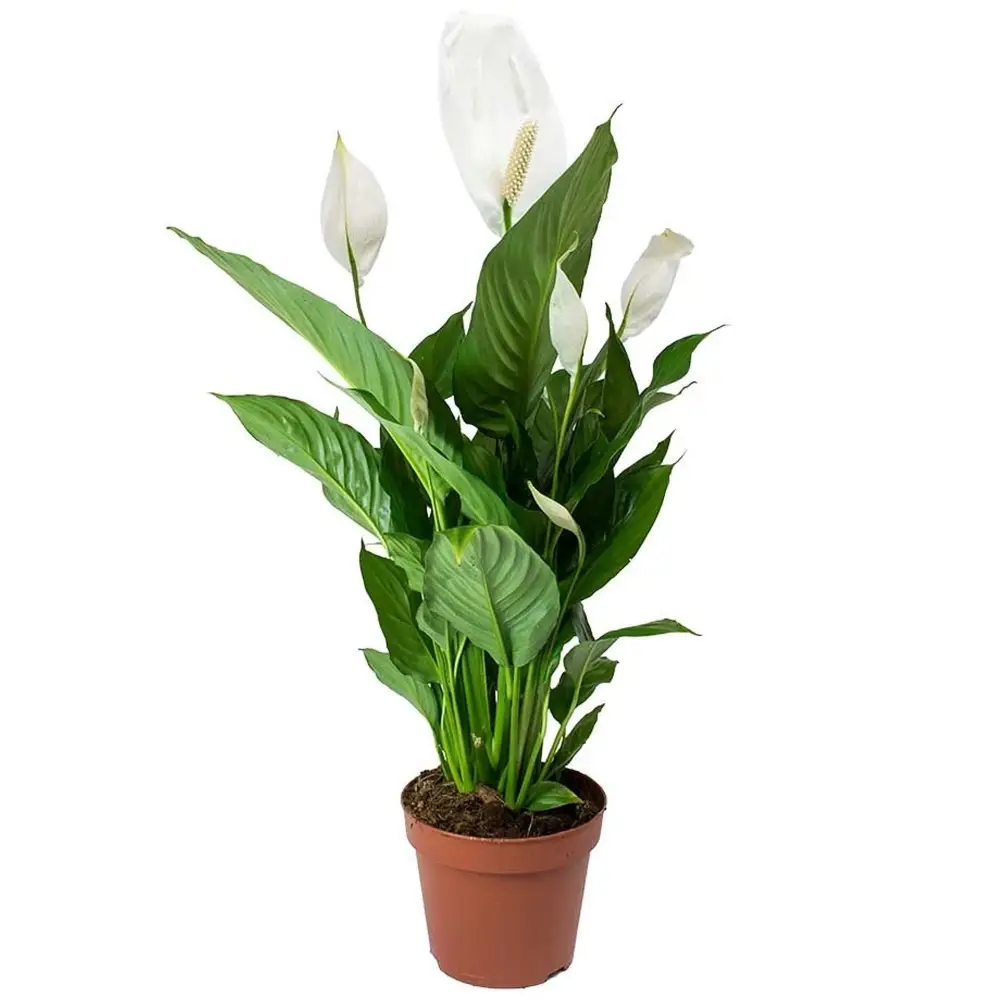
Peace Lily, Spathiphyllum Plant
8. Common Problems and Solutions:
- Drooping/Wilting leaves: Usually a sign of underwatering. Water thoroughly, and it should perk up.
- Yellow leaves: Can be caused by overwatering (soil stays soggy) or underwatering (soil dries out excessively). It can also indicate a need for repotting if older leaves are yellowing.
- Brown leaf tips/edges: Often caused by excessive direct sunlight, over-fertilizing, low humidity, or chemicals/salt buildup in tap water.
- Lack of blooms: Typically due to insufficient light or low humidity. Move to a brighter (indirect) location and increase humidity.
- Pests: Peace lilies are relatively pest-free, but can occasionally get mealybugs, spider mites, scales, or fungus gnats. Address these with appropriate houseplant pest control methods. Fungus gnats are often a sign of consistently wet soil, so allowing the topsoil to dry out can help.
By following these care tips, your Peace Lily should thrive and bring its beautiful foliage and elegant blooms to your indoor space!
Only logged in customers who have purchased this product may leave a review.
You may also like…
-
Peace Lily Golden
Original price was: ₹599.00.₹99.00Current price is: ₹99.00.Add to cartSize: Single Plant | 2.5″ Pot Included The Peace Lily Golden (Spathiphyllum) is a popular and relatively low-maintenance indoor plant known for its glossy green leaves and elegant white (or sometimes greenish-white) “flowers” (which are actually modified leaves called bracts). Here’s a comprehensive guide to caring for your Peace Lily Golden Plant: 1. Light: Bright, …



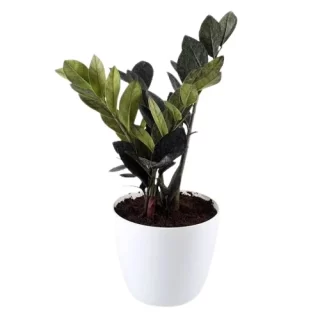
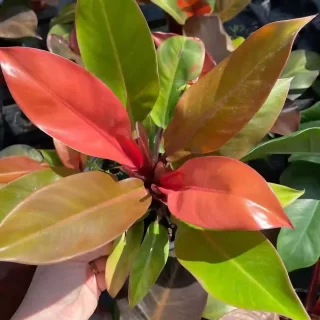



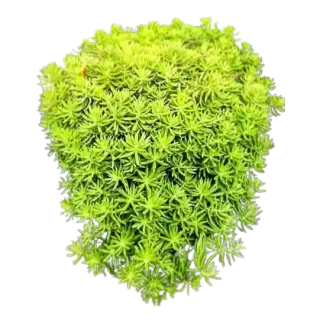

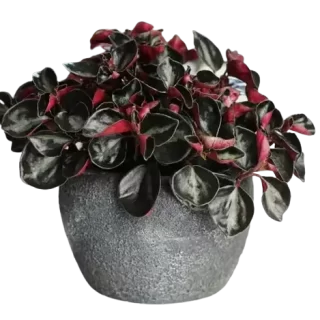
 If you need any assistance, I'm always here. Have you found what you were looking for?
If you need any assistance, I'm always here. Have you found what you were looking for?
Reviews
There are no reviews yet.